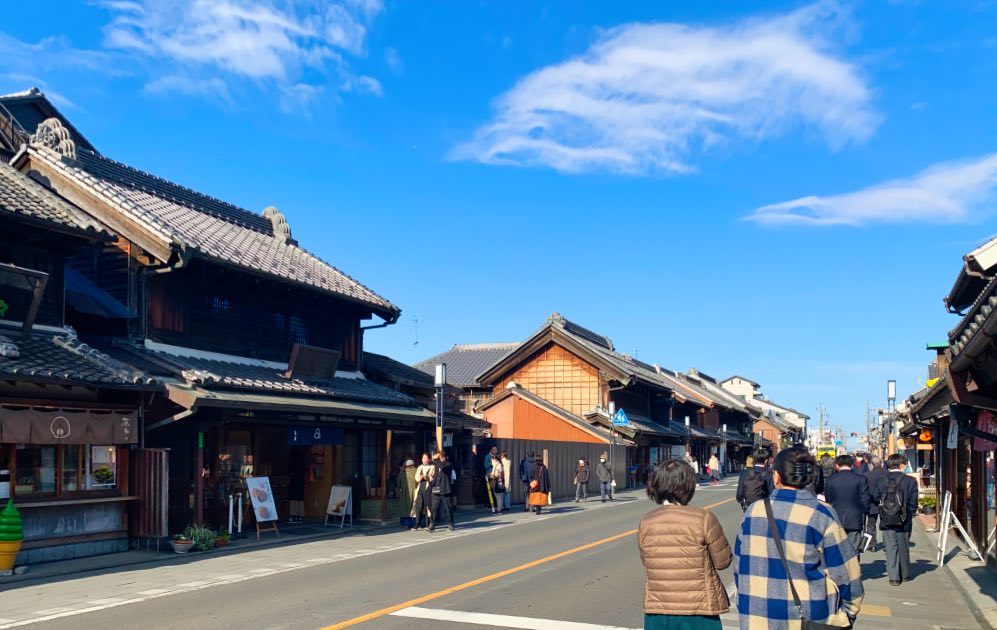Dream of stepping back into the charming era of Edo? Kawagoe, fondly known as “Little Edo” or “Koedo,” awaits you! Nestled in Saitama Prefecture, just a short journey from the hustle of Tokyo, Kawagoe offers a captivating blend of history, traditional architecture, and gastronomic delights. You can make a Day trip from Tokyo to Kawagoe.
Table of Contents
Kurazukuri Zone:Architectural Time Capsule:
A bit of historical background about the Kurazukuri Zone will give you some ideas and cultural understanding before physically going on your Kawagoe Day Trip.
The Kurazukuri Zone in Kawagoe is a historic area famous for its traditional ‘kurazukuri’ warehouses. These warehouses are built using a unique architectural style with thick, fire-resistant clay walls. This construction technique became especially popular after a big fire 1893 destroyed much of the town.
Today, these well-preserved structures give the area a distinctive, old-world atmosphere, often earning it the nickname ‘Little Edo,’ as it echoes the architectural and aesthetic sensibilities of the Edo period.
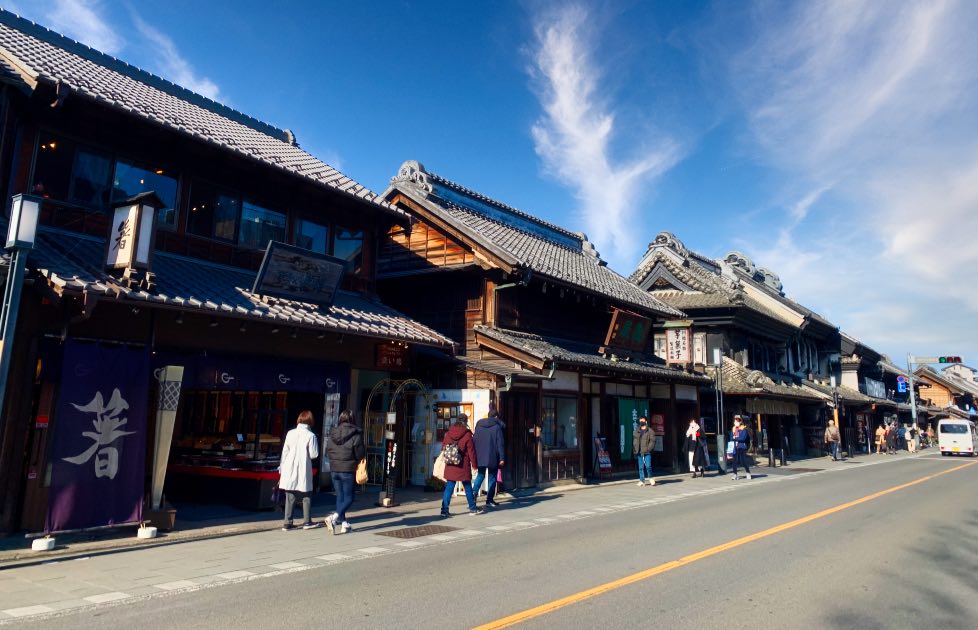
The zone is not just a walk-through history; it’s also a bustling commercial area. Many of these old warehouses have been converted into shops, restaurants, and museums. Visitors can buy traditional Japanese crafts, sample local food, and even learn about the history and culture of the area.
The Kurazukuri Zone is a living museum offering a historical perspective and a vibrant, contemporary experience. If you are interested in Japanese culture, history, or even architecture, it’s a must-visit spot in Kawagoe.
Bell Tower: Kawagoe’s Heartbeat:
The Time Bell Tower, also known as Toki-no-Kane, is like the heartbeat of Kawagoe, Japan. Standing at 16 meters tall, this famous tower rings its bell four times a day, just like it has for hundreds of years.
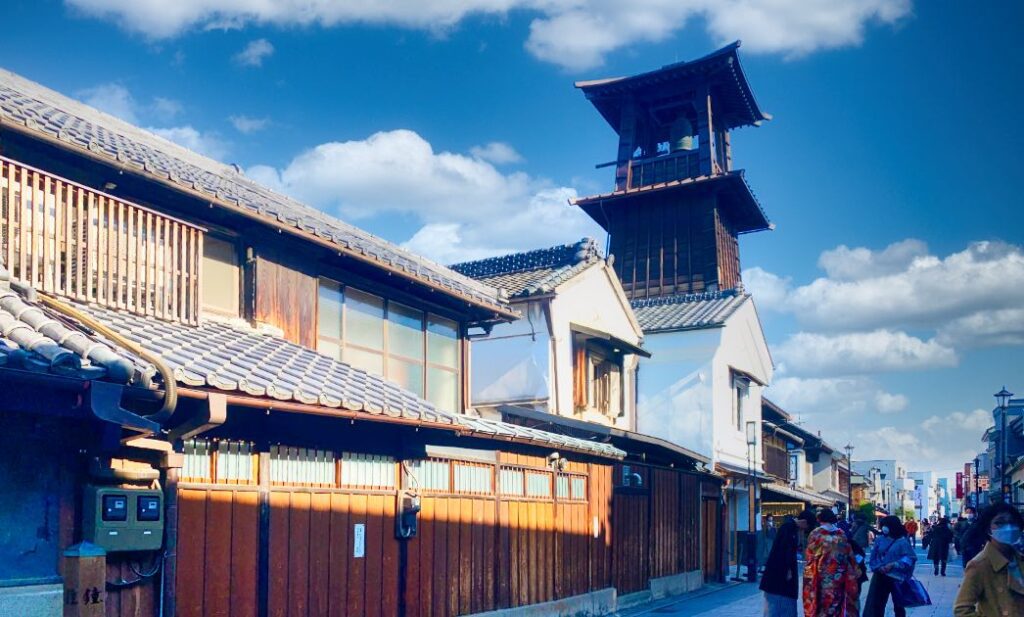
But it’s not just a clock; it’s a part of the town’s daily life. When the bell rings, it brings a calm and peaceful feeling to everyone who hears it. It’s a reminder of the town’s rich history and adds a special, old-fashioned touch to the area.
This sweet Bell Tower will let you know you’re in Kawagoe Day Trip. From time to time, you’ll hear the ring of the bell while you’re strolling the Little Edo.
Kawagoe Castle:
Experience the grandeur of Kawagoe Castle, where the Honmaru Goten (main castle building) stands as a splendid reminder of the city’s feudal past. It’s not just a castle; it’s a journey back to a time of shoguns and samurais.
Kawagoe Castle, also known as Honmaru Goten, is a historical site. It was initially built in the 15th century and played a significant role in the region’s military and administrative history.
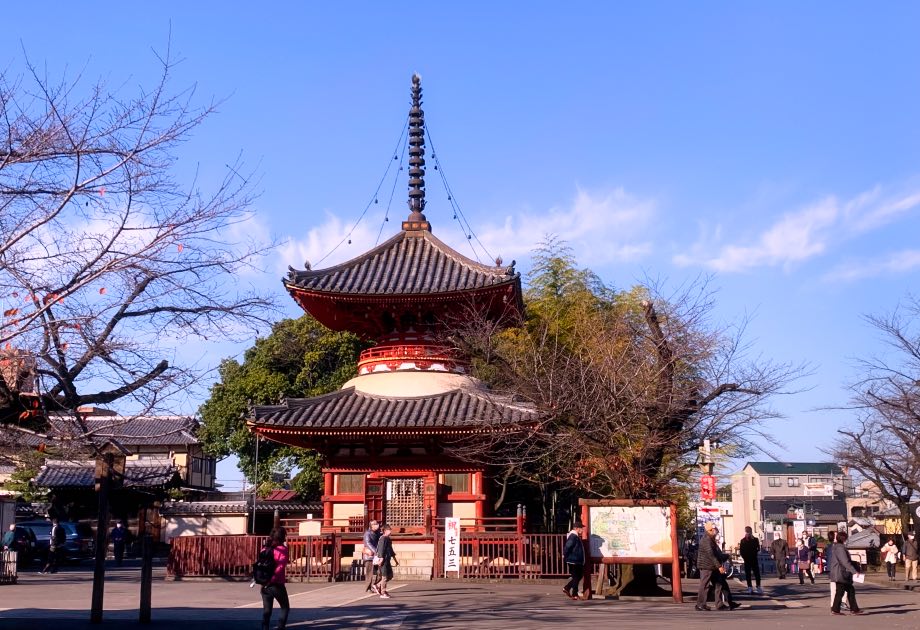
The castle was strategically important for its proximity to Edo (now Tokyo), serving as a northern defense point against potential threats to the then-capital. The lords who governed Kawagoe Castle were often close allies of the Tokugawa shogunate, underlining its geopolitical importance.
What remains of Kawagoe Castle today isn’t the full, original structure but rather a significant fragment—the Honmaru Goten. This was the luxurious residence where the daimyo, or feudal lord, conducted his daily affairs. While much of the expansive castle was torn down over time, notably during the modernizing Meiji period, the Honmaru Goten stands resilient, a sentinel of a bygone era.
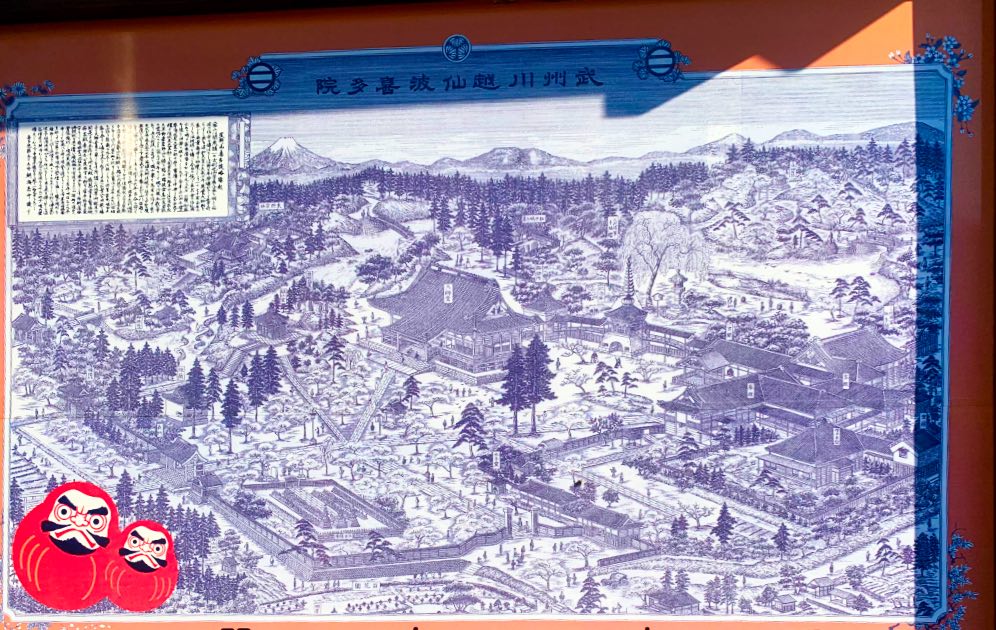
Now serving as a museum, this preserved space transports visitors straight into the Edo period. Here, one can marvel at the intricacies of ancient Japanese architecture and pore over a curated collection of artifacts that tell the tale of the castle’s past residents and their way of life. It’s more than just a museum; it’s a time capsule that bridges Kawagoe’s regal past with the present.
Visitors can explore various rooms, including the reception halls, lord’s living quarters, and some tatami rooms, all offering a glimpse into the lives of samurai lords and their retinue. The site also often hosts cultural events and exhibitions, which help contextualize its historical importance.
Spiritual Haven:
Seek blessings at the Hikawa Shrine, known for bestowing good relationships and marriage luck, and visit Kitain Temple, home to some of the only remaining structures of Edo Castle. These are not just religious sites but part of the city’s soul.
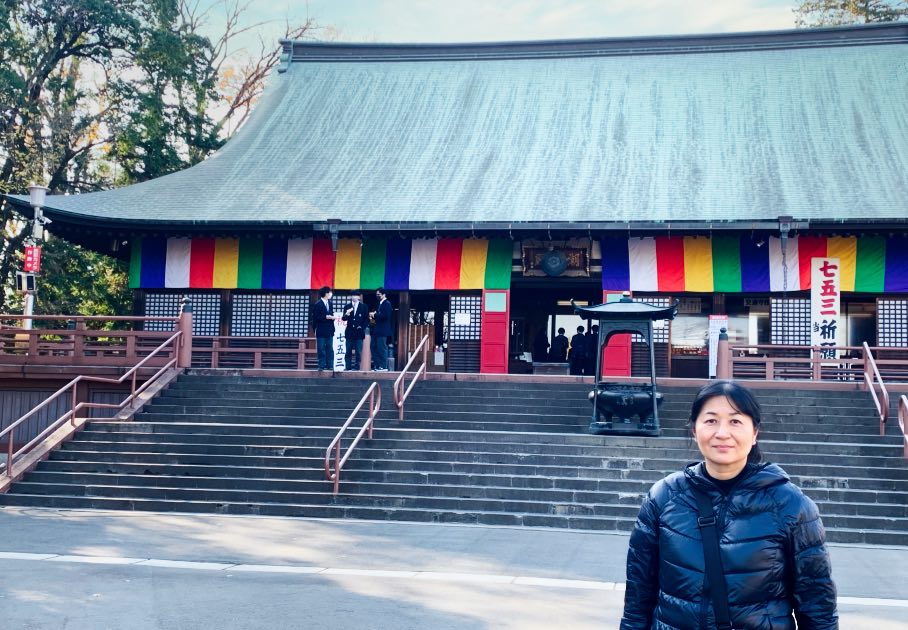
Hundreds of tourists come for a day trip from Tokyo to Kawagoe every day. Most of them visit these two spiritual spots while they are in Kawagoe.
Hikawa Shrine in Kawagoe, often called Kawagoe Hikawa Shrine, is one of the most famous Hikawa Shrines among hundreds in the country. The shrine has a long history dating back over 1,500 years. It is renowned as a spiritual site for divine matchmaking, making it a popular destination for couples or individuals praying for a fruitful romantic life.
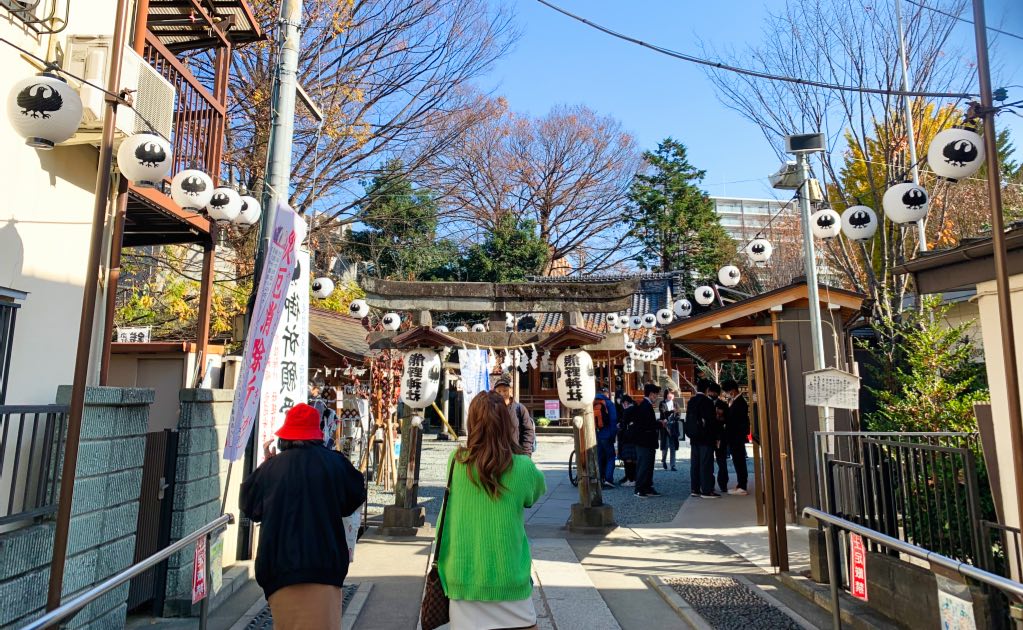
Architecturally, the shrine is noteworthy for its grand torii gate, intricately carved details, and serene setting with a backdrop of ancient trees. Additionally, the shrine is adjacent to a river with wind chimes (known as “furin”) hanging from the trees during summer. These chimes are part of a seasonal event, creating a harmonious and peaceful atmosphere.
Candy Alley: Taste of Nostalgia:
Experience a delightful walk down memory lane at Candy Alley, one of the main attractions in Kawagoe. This quaint, charming street, brimming with traditional candy shops, is a lively reflection of Kawagoe’s diverse culinary heritage. It’s a relatively small area, but every step is packed with nostalgia and the irresistible allure of sweets that have been a local favorite for generations.
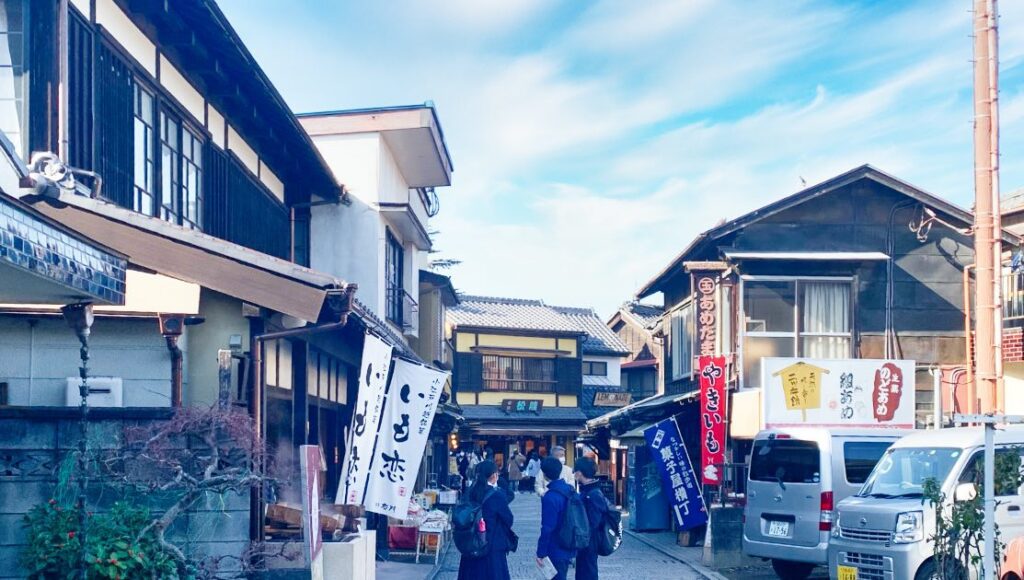
At Kashiya Yokocho or Candy Alley, the air is filled with the tempting aromas of traditional treats being crafted using age-old techniques. From colorful rice crackers to sweet potato chips, and even a variety of old-fashioned candies, every morsel is a delicious piece of Kawagoe’s history. This sugary haven is more than just a market; it’s a living piece of history, taking visitors on a delectable journey back in time.
Sweet Potato Delight:
Sweet Potato will make your Kawagoe Day Trip enjoyable.
In Kawagoe, sweet potatoes take the culinary stage in an array of delicious forms you won’t resist. Imagine crunching into airy, sweet potato chips or letting the melt-in-your-mouth goodness of Imo Yokan, a jelly-like traditional dessert, tantalize your taste buds.
But that’s just the beginning. As you wander through Kawagoe’s picturesque streets, why not enjoy a cone of creamy sweet potato soft-serve ice cream? The smooth, velvety texture is perfect for cooling off on a warm day. Or, if you’re in the mood for a grown-up indulgence, sip on some sweet potato sake, an alcoholic delight that’s as intriguing as it is delicious.
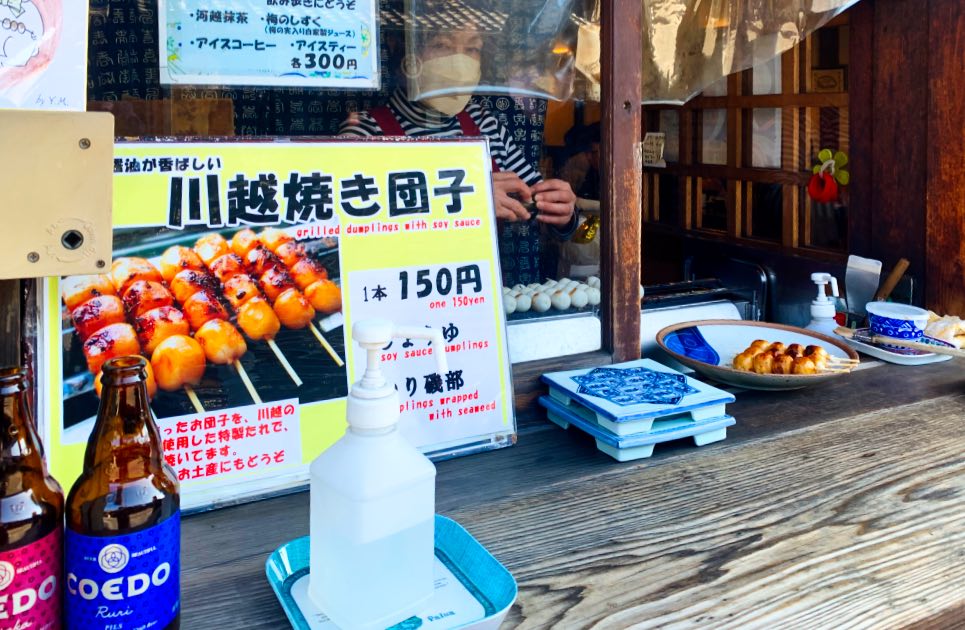
And let’s remember the steamed buns, known as Imo Manju. These fluffy pockets of joy come filled with luscious sweet potato paste, offering a perfect blend of textures. Then there’s Imo Kintsuba, a traditional sweet where a layer of sweetened soybean flour or cake encases a heart of sweet potato paste.
From rustic fries to sophisticated Imo Kintsuba and comforting steamed buns, Kawagoe’s love affair with sweet potatoes is truly a culinary journey worth taking. So go ahead, embark on this flavorful adventure, and let Kawagoe’s inventive food culture sweep you off your feet!
Sake Breweries:
If you are in Kawagoe, visiting one of its historic sake breweries is an experience you will want to experience. These storied establishments offer a drink and a journey through the rich cultural tapestry of Japan’s Edo period.
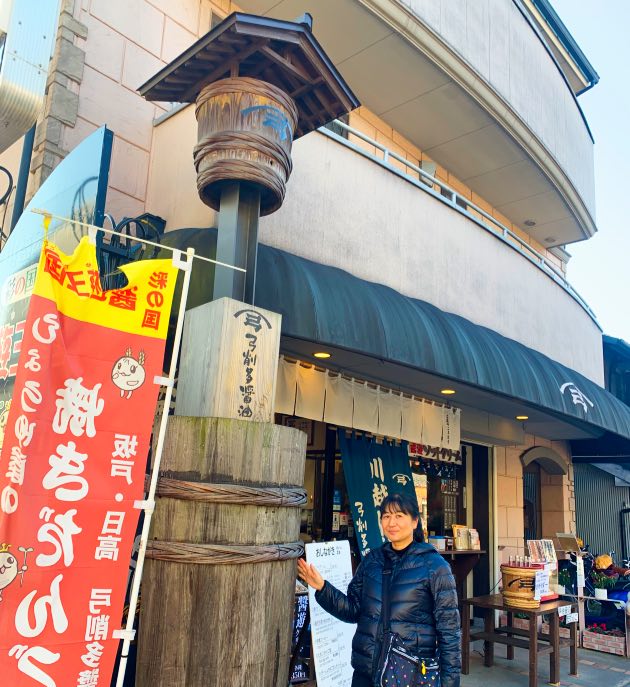
A guided tour provides a fascinating look at the art and science behind sake brewing. From the choice of rice to the meticulous fermentation process, you’ll gain an appreciation for the craftsmanship that goes into every bottle.
And the highlight? Sampling the exquisite sake, an authentic taste of Kawagoe’s heritage.
But if time doesn’t allow for a complete brewery tour, don’t fret. The essence of Kawagoe’s sake culture is pervasive throughout the town. Many local restaurants and bars proudly display sake signage, signifying their commitment to this age-old tradition.
It’s an open invitation to step inside and enjoy an authentic culinary experience. Whether you opt for a sake-paired meal or simply a glass of the local brew, you’re participating in a tradition that has enriched Kawagoe for centuries.
You can find such restaurants in front of the Bell Tower.
Journey Begins Now:
Kawagoe is not just a city; it’s a living, breathing museum of Japanese culture, a food lover’s paradise, and a portal back in time. Its rich tapestry of history, culture, and cuisine is what makes Kawagoe famous and an absolute must-visit. Embark on your journey today and create unforgettable memories in Kawagoe – the enchanting ‘Little Edo.’ Tokyo to Kawagoe.
If you can easily visit this ‘Little Edo’ from Tokyo. It’s very easy to go to Kawagoe from Tokyo.
So, take a Kawagoe Day Trip if you are in Tokyo, no matter the season. I’m sure you’ll enjoy it.
What’s the best season of Kawagoe?
Each season in Kawagoe, Japan, presents its unique charm, and the best one to visit depends largely on your preference. Here’s what you can expect in each season:
1. Spring (March to May): Like the rest of Japan, spring is a beautiful time to visit Kawagoe. The weather is comfortably warm, and the cherry blossoms (sakura) are in full bloom, providing wonderful photo opportunities. The city is quieter during this season, offering a peaceful atmosphere.
2. Summer (June to August): Summers can be hot and humid but also bring lush greenery. There’s also the summer, Tanabata, and other local events you can enjoy.
3. Autumn (September to November): November is a delightful month to visit Kawagoe, offering a mix of temperate weather and seasonal attractions. As autumn is in full swing, visitors can expect cooler temperatures, ranging from 50°F to 60°F (10°C to 15°C), making it comfortable for exploring the town’s historical and natural landmarks. The fall foliage is particularly noteworthy; the vibrant, beautiful hues of red, orange, and yellow leaves make sites like Kumoba Pond even more photogenic.
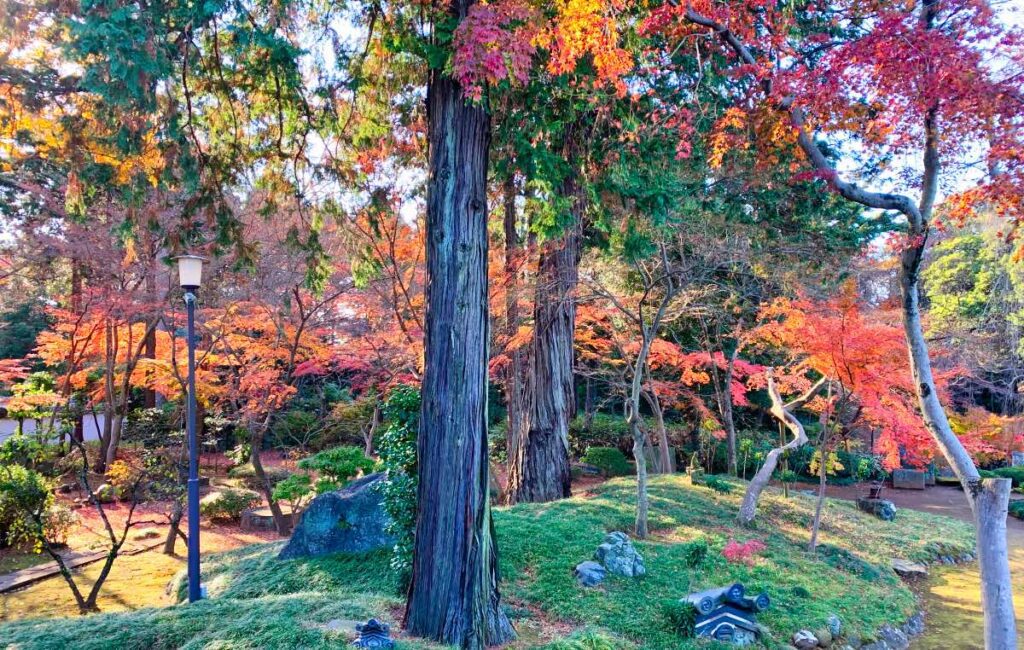
This month also provides an opportunity to experience traditional Japanese culture against an autumnal backdrop. Attractions like the Little Edo Warehouse District and Kawagoe Hikawa Shrine take on a special charm in the softer fall light. The somewhat quieter atmosphere compared to peak tourist seasons allows for a more leisurely exploration of the town.
4. Winter (December to February): Winter in Kawagoe is relatively mild, and the city is less crowded. The New Year’s celebrations are a unique cultural experience, where you can visit temples and shrines for the first prayer of the year (Hatsumode).
Please note that weather conditions can vary year by year, and it’s advisable to check the weather forecast and any travel advisories closer to your visit.
What to eat at Kawagoe?
Kawagoe offers a vibrant food scene featuring both traditional Japanese cuisine and international options. However, only snacks are not enough, and you need a proper lunch.
One restaurant owner told me that many people go from Tokyo to Kawagoe to have a good lunch. So why not enjoy a delicious lunch?
Kincho Restaurant:
One of the best traditional Japanese restaurants is Kincho, in front of the iconic Toki-no-Kane (Kawagoe Bell Tower).
Kincho is strategically positioned to attract both locals and visitors. Specializing in seafood, the restaurant is a haven for those looking to indulge in fresh fish sashimi and grilled fish set meals. The use of market-fresh ingredients not only elevates the taste but also adds a touch of authenticity to the dining experience.
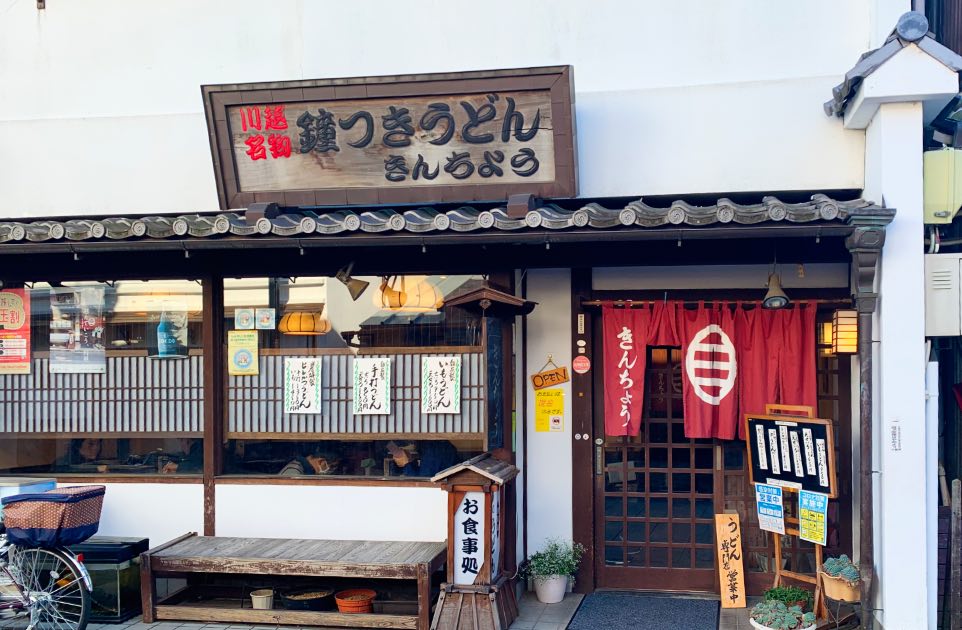
But it’s not just the seafood that steals the show; Kincho also prides itself on offering an array of carefully selected local sakes. This provides a harmonious balance to the meal, as sake often pairs excellently with seafood, enhancing the overall flavor profile.
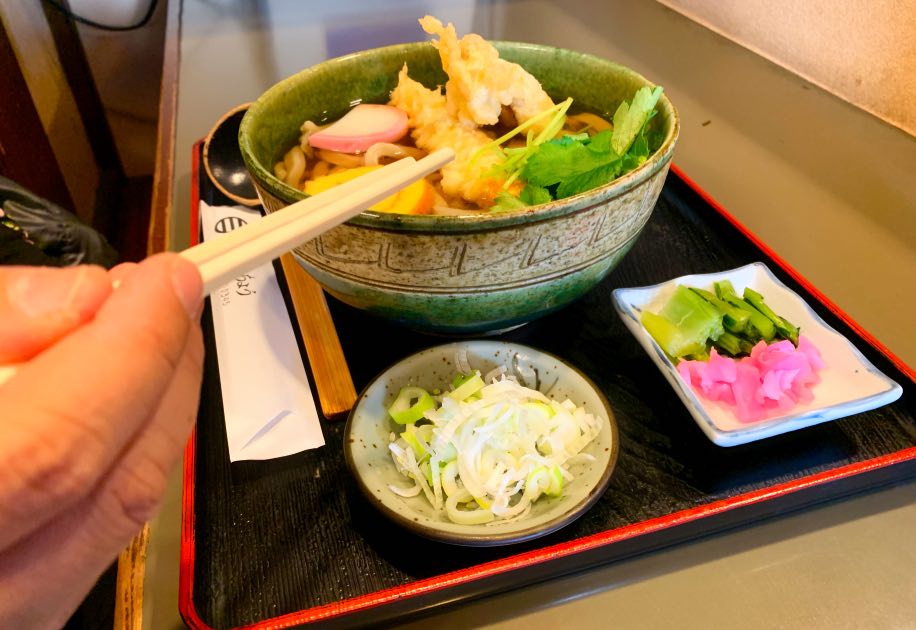
Kincho isn’t just a restaurant; it’s a culinary experience that melds fresh, high-quality seafood with the rich tapestry of local beverages. Given its reasonable pricing, it offers exceptional value, making it a must-visit for anyone looking to experience the gastronomic diversity of Kawagoe.
Kashou Umon Bell Tower Branch:
Nestled directly under the iconic Toki-no-Kane, the Time Bell Tower symbolizes Kawagoe’s rich history. You’ll find Kashou Umon Bell Tower Branch—a culinary gem that offers an authentic Japanese dining experience. As you walk through its wooden doors, the ambiance envelops you, whispering tales of Japan’s illustrious Edo period.
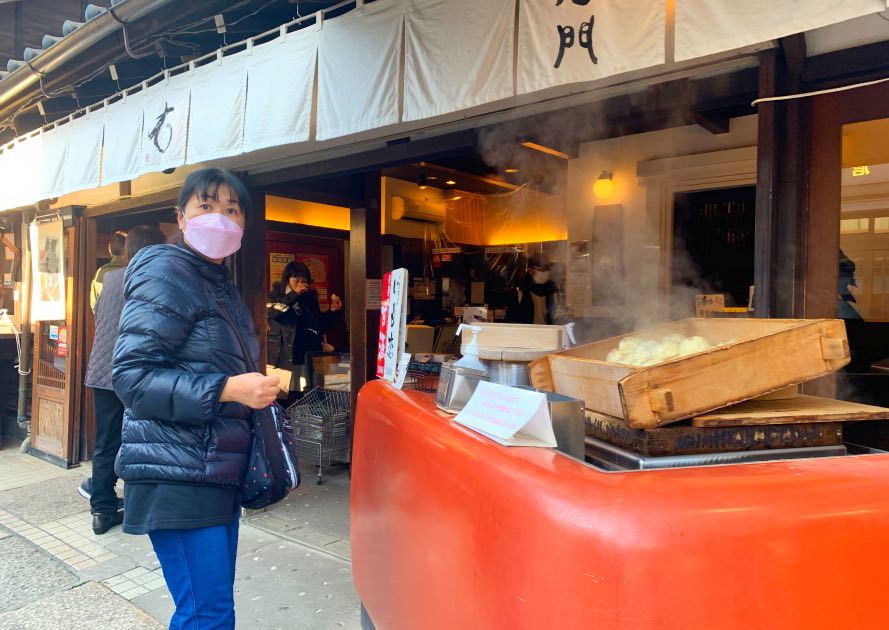
One delicacy stands out among the array of traditional dishes that celebrate Japan’s culinary heritage: Imo Koi. This steamed bun is a harmonious marriage of textures and flavors, featuring a soft, chewy shell of mochi flour dough filled with decadent sweet potato and bean paste. The dish is so beloved it’s earned the ‘Sainokuni Certified Excellent Brand Product’ title by Saitama Prefecture.
But the magic of Imo Koi extends beyond its irresistible taste. This treat transcends age, capturing the hearts of both young and old. It even presents itself as the perfect heartfelt gift, wrapping up the soul of Kawagoe in a delectable package to share with your loved ones.
So, when you find yourself strolling through Kawagoe and hearing the chimes of Toki-no-Kane, follow your senses straight to the Kashou Umon Bell Tower Branch. Visiting here is not merely a meal but an unforgettable experience, a melodious symphony of history and taste waiting to serenade your palate. Don’t miss out on the simple yet extraordinary pleasure of Imo Koi.
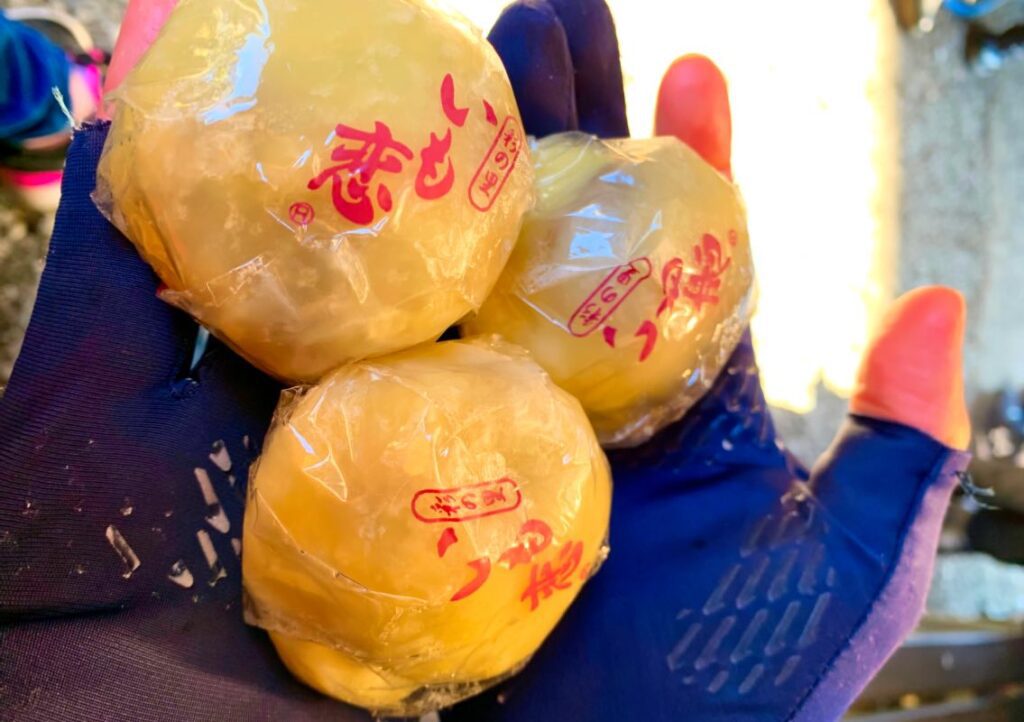
Don’t be surprised. I ate 10 Imo Koi potato balls on a cold November morning during my Kawagoe’s first visit.
So tasty. I couldn’t stop eating.
Are you finishing your Kawagoe Day Trip without tasting Imo Koi?
Other Famous Restaurants:
There are various types of restaurants. You can try some other restaurants, as I mentioned below-
Yamaya: This unagi (grilled eel) restaurant is famous for its delicious Unadon (grilled eel over rice).
Kameya Eisen: Located on Candy Alley, they are famous for their sweet potato treats. You must try their purple sweet potato soft-serve ice cream.
Torigin: Known for yakitori (grilled chicken skewers), this place is a great spot to experience Japanese dining culture.
Kawagoe Saryo: I recommend this spot for matcha lovers. They serve various matcha-flavored desserts.
Matsuya: A popular Gyudon or beef bowl spot. It’s a cheap, fast, and very satisfying meal.
Komadori Shokudo: This restaurant serves traditional Japanese set meals. It’s located in a historic building in the warehouse district, adding to the overall dining experience.
Kashiya Yokocho (Candy Alley): Though not a restaurant, Candy Alley offers numerous shops where you can taste traditional Japanese sweets and snacks.
Kura Sushi Kawagoe: This popular conveyor belt sushi restaurant offers a variety of delicious sushi at a reasonable price.
Shimano: A well-regarded yakiniku (grilled meat) restaurant. They offer a variety of high-quality meats for grilling at your table.
Hanbey-Fugetsudo: A sweets shop that’s been around for over a hundred years, offering seasonal sweets and their signature Dorayaki pancakes.
These suggestions should provide various dining experiences to cater to different tastes and budgets. Check opening hours and whether reservations are needed, as these can var
How to access Kawagoe from Tokyo?
There are several options to travel from Tokyo to Kawagoe, each with its own cost, comfort, and travel time advantages. As for the prices, they are subject to change, so it’s advisable to check the most recent fares directly with the transportation providers. Here are a few routes you could consider:
1. By Train
a) Tobu Tojo Line from Ikebukuro Station: The Limited Express train takes about 30 minutes to reach Kawagoe Station and costs around 490 JPY (as of 2023). There are also Semi Express and Local trains that can take a bit longer but are slightly cheaper.
b) R Saikyo/Kawagoe Line from Shinjuku Station: It takes about 1 hour to reach Kawagoe Station, and the fare is approximately 770 JPY (as of 2023).
Note: I strongly recommend taking the train from Tokyo to Kawagoe, and you will save time and money. On the other hand, you can spend more time there and your Kawagoe Day Trip will be unforgettable.
2. By Car
If you choose to drive, the journey can take anywhere between 60-90 minutes, depending on traffic conditions. Please note that there will be toll costs, parking fees, and petrol costs to consider, which can vary greatly.
3. By Bus:
A network of buses from Kawagoe Station and Hon-Kawagoe Station connects Kawagoe’s main sights. Two tourist loop buses, operated by different companies, offer convenient access.
The Tobu Koedo Loop Bus provides hourly service on weekdays, every 30 minutes on weekends and holidays, with a one-day pass costing 400 yen. Alternatively, the vintage-style Co-Edo Loop Bus charges 200 yen per trip or 500 yen for a day pass, running one to two trips per hour on two routes.
4. Join Day Bus Trip:
Are you seriously looking for a Kawagoe Day Trip?
If you’re entirely new to Japanese culture and language with small children or want to avoid walking a lot, I strongly recommend joining a Day Bus Trip. It’s easy and less walking.
Hop on a day bus trip from Tokyo to Kawagoe for an adventure you won’t forget!
An expert guide will first take passengers to Karuizawa Prince Shopping Plaza, where shopping meets nature. Next, the group will visit Kumoba Pond, known for its beautiful, calm waters.
The day continues with a visit to Kawagoe Hikawa Shrine, where people have prayed for love for centuries.
The trip wraps up with a walk through the Little Edo Warehouse District, a must-see for fans of traditional architecture. Don’t miss this unique blend of modern and ancient Japan all in one day!
Buy here A day Bus Trip from Tokyo to Kawagoe.
Book Bus Trip:
Check availability here
